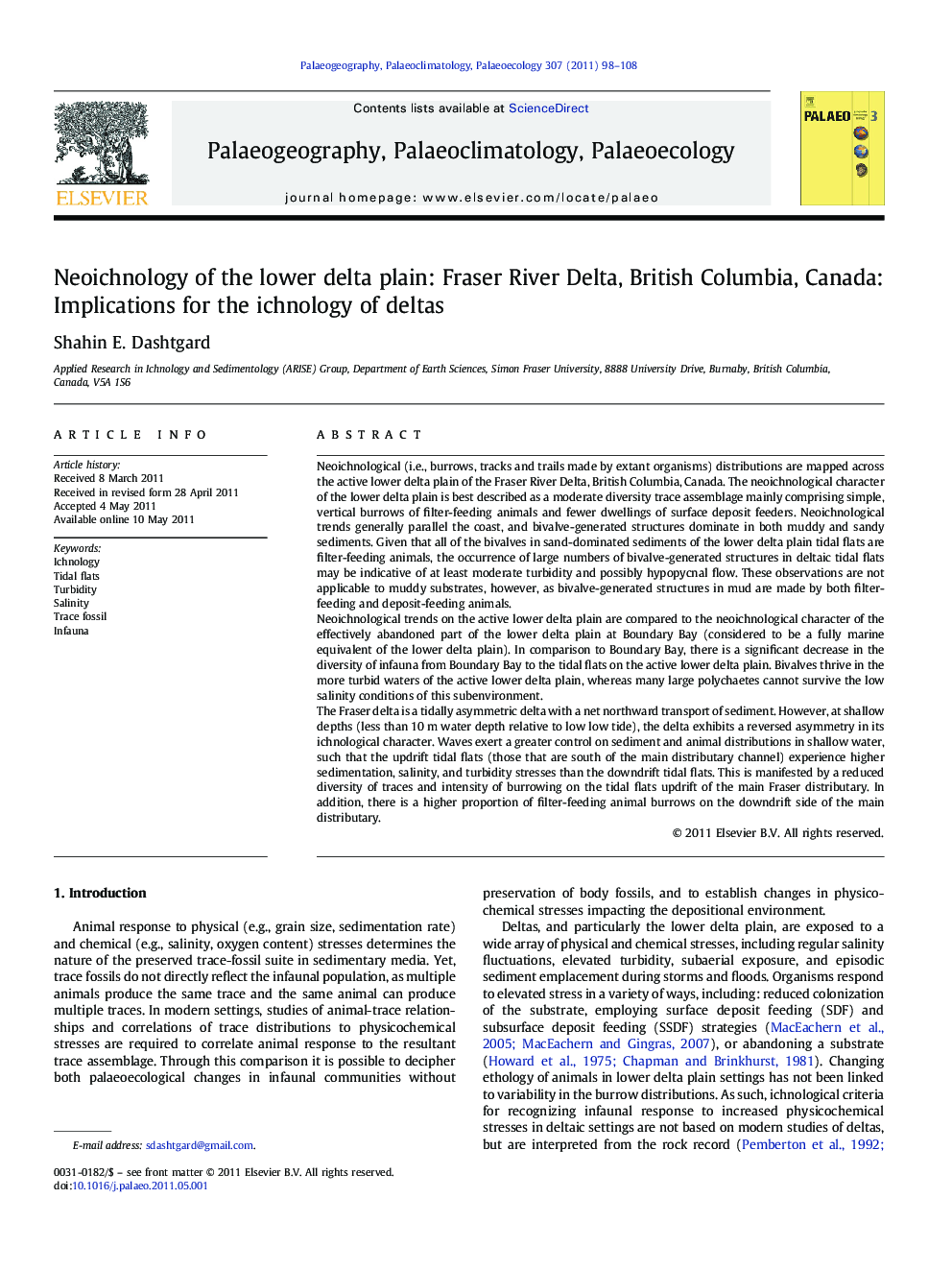| کد مقاله | کد نشریه | سال انتشار | مقاله انگلیسی | نسخه تمام متن |
|---|---|---|---|---|
| 4467293 | 1622253 | 2011 | 11 صفحه PDF | دانلود رایگان |

Neoichnological (i.e., burrows, tracks and trails made by extant organisms) distributions are mapped across the active lower delta plain of the Fraser River Delta, British Columbia, Canada. The neoichnological character of the lower delta plain is best described as a moderate diversity trace assemblage mainly comprising simple, vertical burrows of filter-feeding animals and fewer dwellings of surface deposit feeders. Neoichnological trends generally parallel the coast, and bivalve-generated structures dominate in both muddy and sandy sediments. Given that all of the bivalves in sand-dominated sediments of the lower delta plain tidal flats are filter-feeding animals, the occurrence of large numbers of bivalve-generated structures in deltaic tidal flats may be indicative of at least moderate turbidity and possibly hypopycnal flow. These observations are not applicable to muddy substrates, however, as bivalve-generated structures in mud are made by both filter-feeding and deposit-feeding animals.Neoichnological trends on the active lower delta plain are compared to the neoichnological character of the effectively abandoned part of the lower delta plain at Boundary Bay (considered to be a fully marine equivalent of the lower delta plain). In comparison to Boundary Bay, there is a significant decrease in the diversity of infauna from Boundary Bay to the tidal flats on the active lower delta plain. Bivalves thrive in the more turbid waters of the active lower delta plain, whereas many large polychaetes cannot survive the low salinity conditions of this subenvironment.The Fraser delta is a tidally asymmetric delta with a net northward transport of sediment. However, at shallow depths (less than 10 m water depth relative to low low tide), the delta exhibits a reversed asymmetry in its ichnological character. Waves exert a greater control on sediment and animal distributions in shallow water, such that the updrift tidal flats (those that are south of the main distributary channel) experience higher sedimentation, salinity, and turbidity stresses than the downdrift tidal flats. This is manifested by a reduced diversity of traces and intensity of burrowing on the tidal flats updrift of the main Fraser distributary. In addition, there is a higher proportion of filter-feeding animal burrows on the downdrift side of the main distributary.
Research Highlights
► Trace distribution mapped across the active lower delta plain of the Fraser delta.
► Neoichnological trends parallel the coast: bivalves dominate in both mud and sand
► Tidally asymmetric delta: tidal-flat ichnology shows opposite trend to sedimentology.
► Wave processes dominant in shallow water: control ichnological distribution
Journal: Palaeogeography, Palaeoclimatology, Palaeoecology - Volume 307, Issues 1–4, 1 July 2011, Pages 98–108